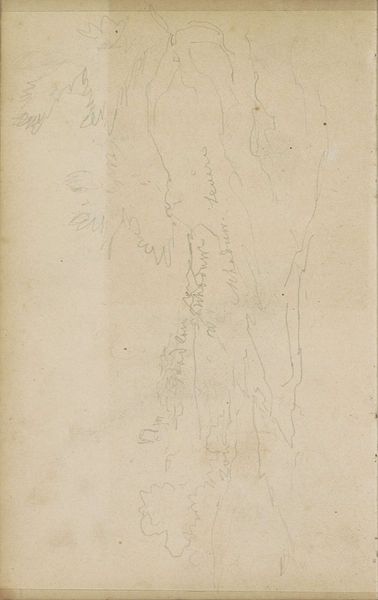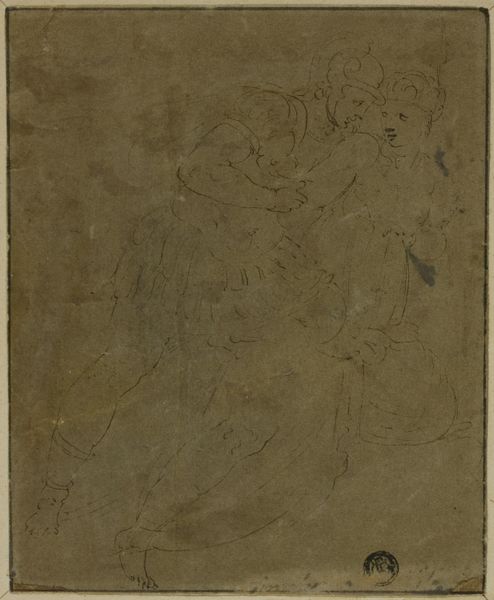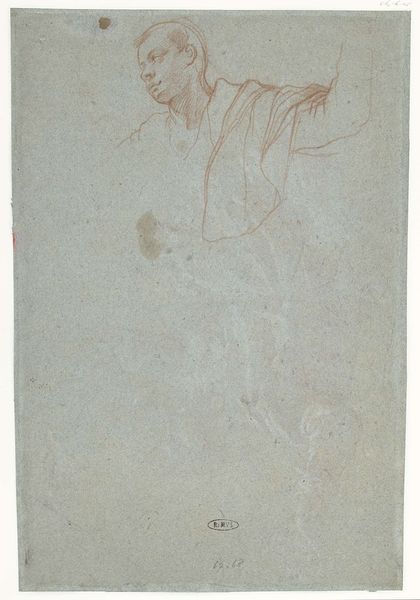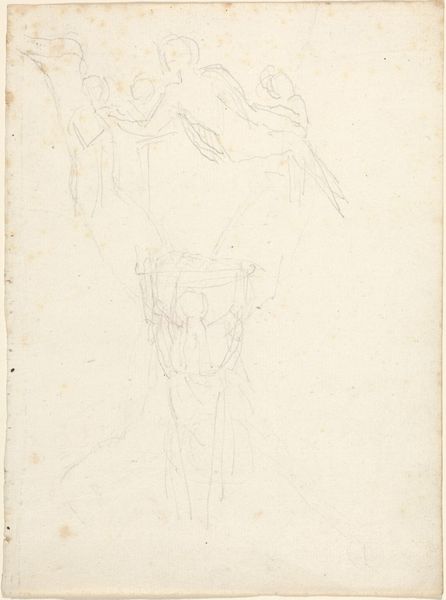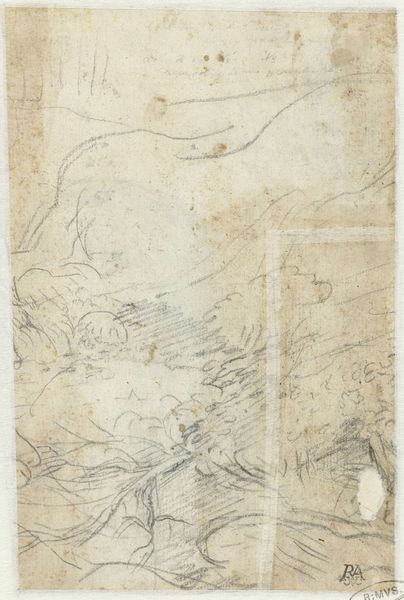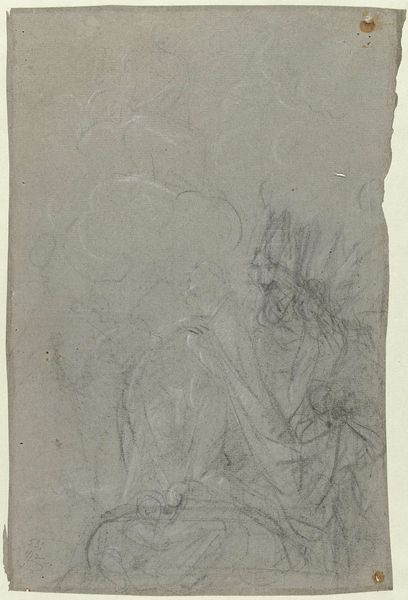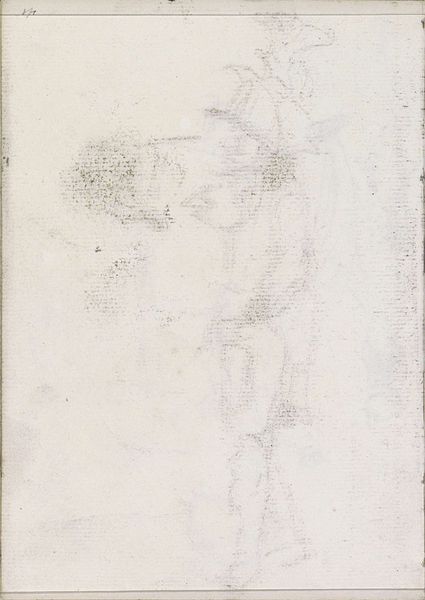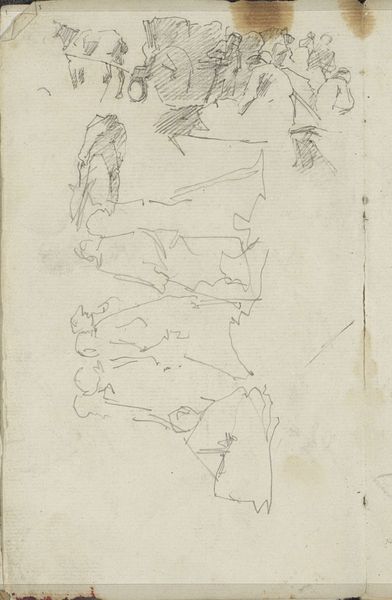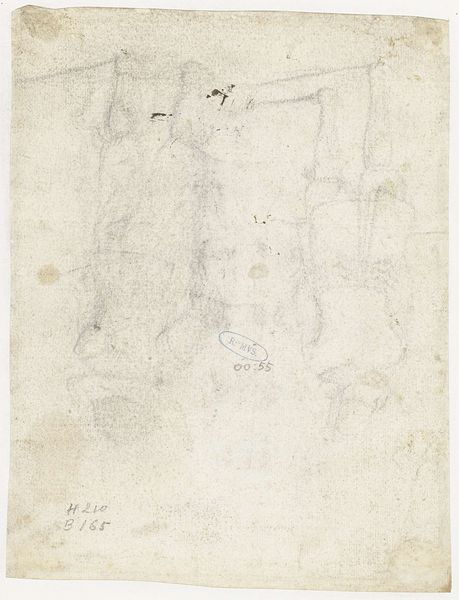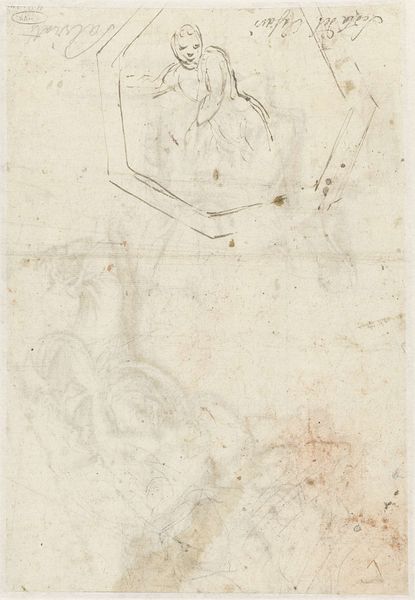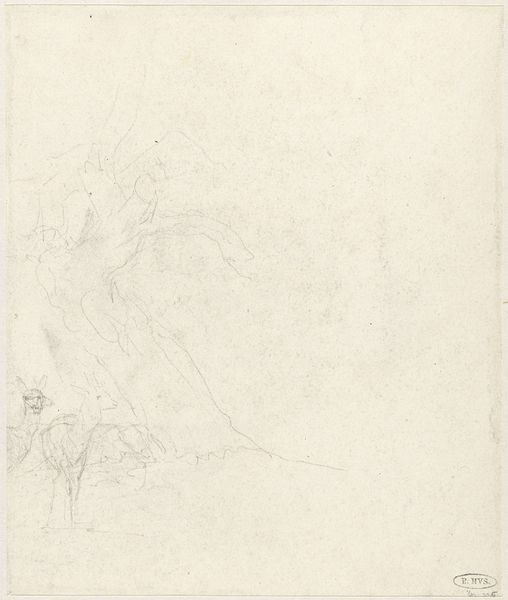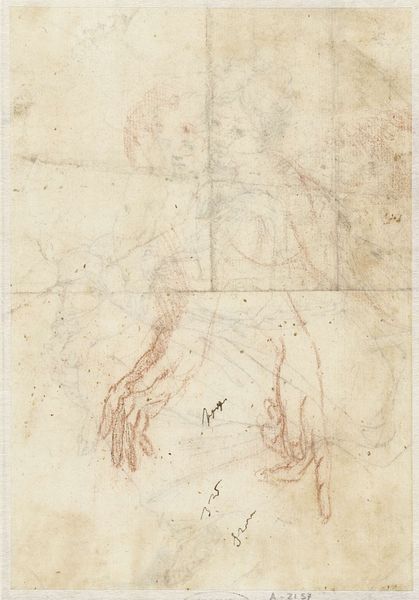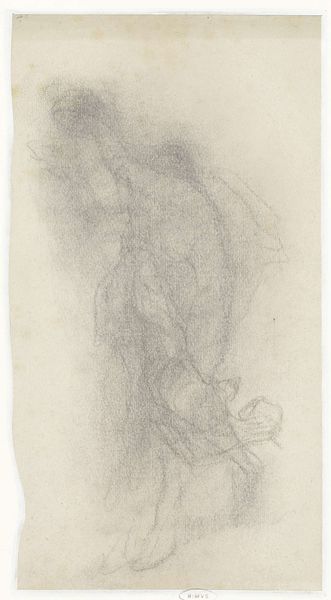
drawing, paper, pencil
#
drawing
#
pencil sketch
#
paper
#
form
#
geometric
#
pencil
#
line
#
academic-art
Dimensions: height 152 mm, width 117 mm
Copyright: Rijks Museum: Open Domain
Curator: Welcome. Today, we will be examining Arnoud Schaepkens’s "Kromstaf", a pencil drawing on paper created sometime between 1831 and 1904. Editor: Oh, this is lovely. There’s something so ethereal about the medium here; it's light and preliminary, like capturing an idea floating just beyond reach. Curator: Precisely. Consider the deliberate use of line in constructing form. Note how the linear style emphasizes the object's contours. We can deconstruct the visual object by discerning it as an amalgamation of geometric forms articulated through meticulous lines, revealing the artwork's structural integrity. Editor: Yeah, it's like a skeleton of something grander. I'm getting a sense of the academic practice, you know? Building up a complex design bit by bit from simple parts. Curator: Indeed. The piece exemplifies academic art’s methodology, underlining a profound connection to its intended function— the artwork explores form. And you can also see Schaepkens rendering to that very system of strict methodology and careful craft, evident in the precise strokes of his pencil. Editor: I get the feeling it was just part of a bigger picture. It has that sort of incompleteness and sense of purpose. Like a preparatory study with its own subtle beauty and quiet, unstated potential. The lack of detail makes it alive to my imagination. What was that object eventually for? I'm dying to know the context here. Curator: The sketchiness allows viewers to engage with a potential of the Kromstaf that exceeds its potential manifestation as an object. With such elegant articulation between positive and negative space within its delicate framework of pencil on paper, Schaepkens enables profound interpretive insights into object form through purely intrinsic values such as its structural arrangement or internal relationships amongst components parts. Editor: Ultimately I think for me, it comes down to the way the work almost evaporates into nothing. And as much as that may appear to undermine it as an ‘artwork,’ it's that quality I find most arresting. Curator: I concur, thank you for so succinctly articulating an intuitive understanding, this dialogue reinforces the art’s importance in our appreciation of visual literacy as a way to decode artworks such as the 'Kromstaf.'
Comments
No comments
Be the first to comment and join the conversation on the ultimate creative platform.
